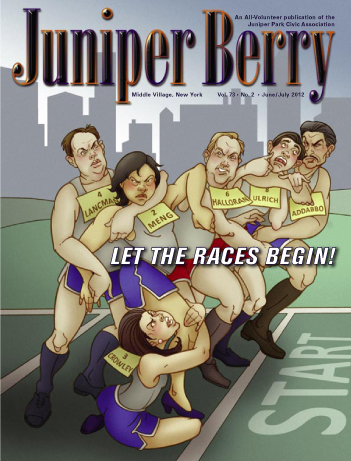An international drug operation led by organized-crime figures that imported more than 400 pounds of heroin yearly into the New York metropolitan area and relied on a city police officer to detect undercover surveillance was shut down yesterday with the arrest of about 60 suspects, law-enforcement authorities said.
Capping a two-year investigation, which investigators say uncovered a drug route from Paris to Moscow to Singapore to New York, 500 narcotics officers from the Police Department raided the homes and hideouts of the suspects yesterday. At one location, a garage in Maspeth, Queens, the officers found $1.7 million in cash hidden in the false bottom of a container. They also recovered $103,000 from a suspected trafficker's safe-deposit box in a midtown bank. Like 'French Connection'
Law-enforcement officials said that the inquiry, which involved international intrigue, recalled the celebrated “French Connection” case of the late 1960's, which marked the first time that narcotics investigators broke up a multimillion-dollar drug-smuggling operation.
The Manhattan District Attorney, Robert M. Morgenthau, whose office was involved in the investigation and will prosecute the suspects, said that about a dozen members and associates of four major organized-crime families played pivotal roles in the smuggling ring. Mr. Morgenthau said that the ring imported heroin that was sold to mid-level distributors for about $30 million annually in illegal profits.
“This is one of the largest drug groups uncovered in years,” said Mr. Morgenthau, ” and probably the first time we have found four traditional organized crime families working together.”
Investigators said that the ring used a French narcotics trafficker who posed as a furniture dealer to bring in the drugs from Southeast Asia. The heroin was smuggled into New York in shipping containers for furniture that had false bottoms. The trafficker, identified by the authorities as Gilbert Barbe, had the containers built in Moscow and transported to Singapore. From there, the containers were shipped to New York.
The cash payoffs for the heroin were shipped back to Europe, again using the false bottoms of the containers, the investigators said. A Glut of Heroin
Drug experts say that with a glut of heroin being produced in Asia and Latin America, street dealers are diluting the drug less than previously and the price for a dose is about $10. Street sellers could obtain up to $15 million in profits, according to the experts.
Mr. Morgenthau said the ring sold the heroin to major street dealers, who distributed it throughout the city, Long Island, New Jersey, Maryland, Virginia and Massachusetts. He identified the Mafia figures as midlevel members and associates of the Gambino, Genovese, Lucchese and Bonanno families.
“Normally they fight over territory,” Mr. Morgenthau said of the Mafia factions. “But this shows that even though we have taken out many of the heads of the organized crime families, the arms and legs are still working.”
The only New York-based Mafia group that was not involved in the scheme was the Colombo family, Mr. Morgenthau said.
Although the heroin was distributed to dealers from other states, Mr. Morgenthau said the drug was sold mainly to street dealers who operated on the Lower East Side and Harlem under the brand name Big Shot.
Mr. Morgenthau declined to provide further details, but other law-enforcement officials said that indictments in the case, known as Operation Big Shot, would be unsealed today in Manhattan State Supreme Court.
The officials, who spoke on the condition of anonymity, said that prosecutors from Mr. Morgenthau's office would seek to confiscate assets totaling $130 million from the defendants. The amount of assets prosecutors attempt to seize through court orders from convicted defendants is usually equivalent to the illegal profits that prosecutors say the defendants have acquired.
One of the first suspects arrested in the roundup was a city police officer, whom the Police Department identified as Edward Castro. After completing his 4 P.M.-to-midnight shift at the 25th Precinct station House, Officer Castro was charged with providing confidential information to the ring.
Police officials said Mr. Castro, 32, supplied the ring with the names of the owners of autos that the traffickers wanted so they could determine if they were under surveillance by law-enforcement agents. Mr. Castro was a summons officer who issued tickets for parking violations and had access to state motor vehicle computer records.
Investigators said the inquiry also uncovered the hideaway of Frank Bassi, who had been a fugitive for five years in a previous narcotics trafficking indictment. Mr. Bassi was found in an apartment at 880 Colgate Avenue in the South Bronx, where he was arrested along with a female companion, officials said.
The officials said that the inquiry began in May 1991 with the arrest of two brothers selling the Big Shot brand of heroin in Manhattan. Through wiretaps and surveillance of the suspected Mafia importers and dealers in the city, investigators said, they were led to Mr. Barbe. He was followed by undercover officers during several trips to the city, the officials said.
Mr. Barbe was arrested two weeks ago, officials said, after he met with Mr. Bassi at Central Park West and 72d Street. Officials said that at the West Side meeting, Mr. Bassi gave Mr. Barbe a shopping bag with $20,000 in cash.
Officials said that unspecified quantities of drugs, 13 unlicensed guns and 20 cars were seized in the raids.
© 2020 The Juniper Park Civic Association Inc. All Rights Reserved.
SERVING MIDDLE VILLAGE AND MASPETH SINCE 1938.



